I am always on the lookout to buy items pertaining to John Matthews, “The Soda Fountain King,” and other leading lights at Green-Wood. Matthews’s story is a fascinating one. And, equally fascinating is the story of his spectacular monument at Green-Wood.
Over the years, The Green-Wood Historic Fund has been able to purchase metal souvenir tokens issued by the Matthews Company, catalogues of its large array of soda fountains for sale, stoneware jugs in which were shipped and stored syrups for flavoring carbonated drinks, a pressure gauge, and photographs of the Matthews Monument at Green-Wood.
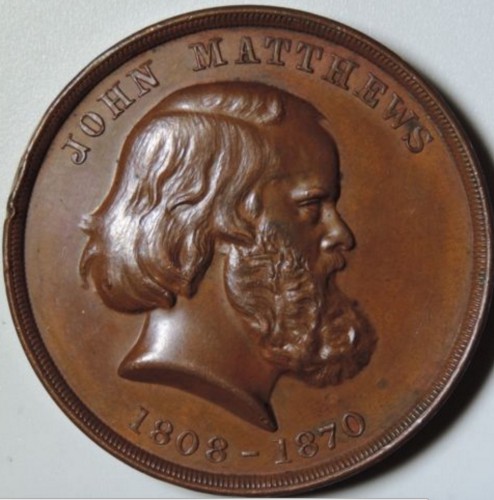
I recently came across 12 wonderful stereoview photographs of the Matthews Monument that were for sale. The photographs were taken just a few years after the monuments unveiling–and I was able to purchase them for The Green-Wood Historic Fund Collections. Let’s take a look! But first, let me tell you about John Matthews and his Green-Wood monument.
Below is a cabinet card photograph of the Matthews Monument at Green-Wood, in section 66, lot 1345, that we have had in our collections for several years. It offers an overview of the monument in sharp detail:
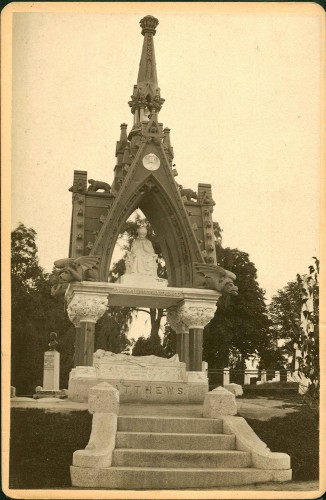
John Matthews (1808-1870) trained in his native England to create soda fountains for adding carbonation to drinks. He then took his talents to New York City, where he established a tremendously-successful business which popularized flavored carbonated drinks and pioneered the elaborate decorated soda fountain. When Matthews retired in 1865, his New York City manufacturing plant on First Avenue, between 26th and 27th Streets, was huge.
Matthews–or perhaps his heirs–hired sculptor Karl Müller (1820-1887) to create a monument for the ages at Green-Wood Cemetery for him and his family. A native of Coblenz, Germany, Müller trained there as a goldsmith, then studied at the Royal Academy in Paris, where he won a gold prize for one of his statuettes. Around 1850, Müller immigrated to New York City and built a thriving business with his brother making statuettes in plaster, terra cotta, and bronze, and casting white metal clock cases.
By 1868, Müller was creating sculpture in terra cotta. The whimsical and extravagant Matthews Monument, executed in terra cotta, marble, and granite, for the huge sum back then of $30,000 ($535,000 in today’s money) was voted the “Mortuary Monument of the Year” soon after it was unveiled. It features a menagerie of animals: fox and lion and bears and wolf and turtles and lizards and ram, etc., as well as portraits of Matthews family members.
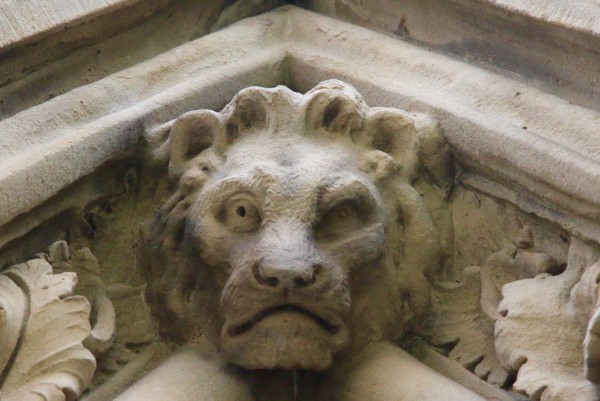
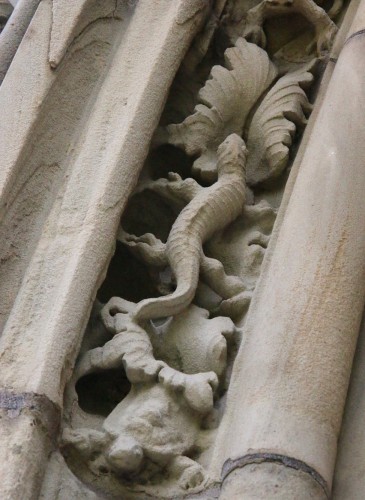
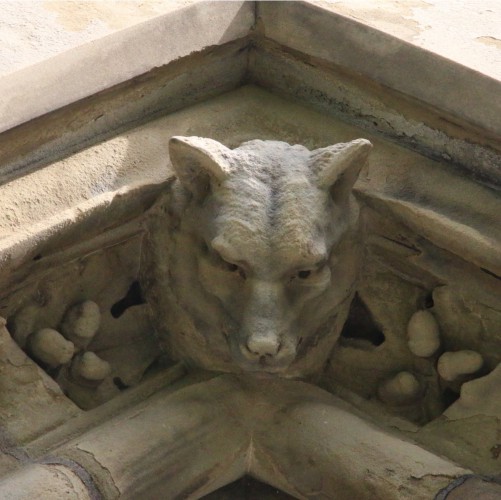
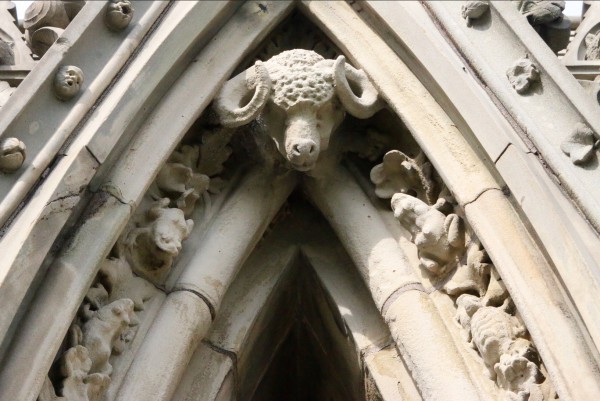
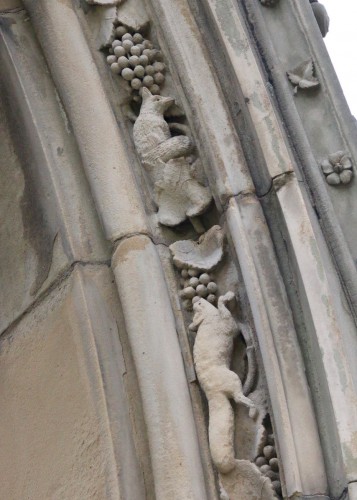
In 1870, Müller went to work at the Union Porcelain Works in Greenpoint, Brooklyn and, in addition to other projects, he was soon working on century vases for the Centennial Exposition of 1876 in Philadelphia.
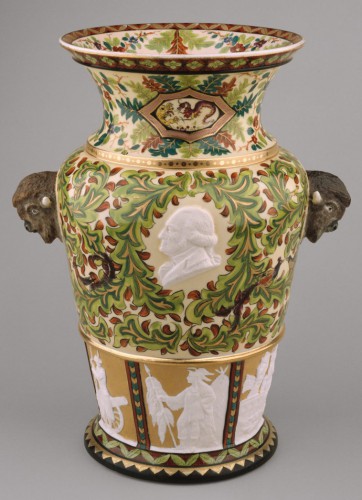
Müller clearly had an ongoing relationship with the Matthews Company. Here’s a coin he created for it, dated 1876, signed by him as the artist:
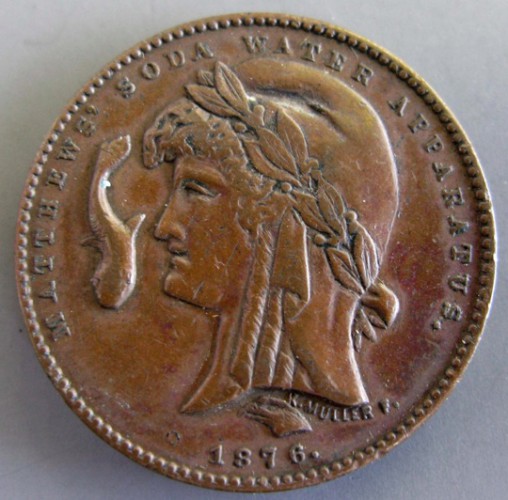
Müller carved his name on the base of the central female figure—a personification of grief or Mrs. Matthews, depending on which interpretation you prefer. As I worked on this blog post, I cropped the second image in this blog post–the cabinet card photograph of the Matthews Monument–to give readers a better look at Muller’s signature on the monument–a signature that is no longer visible there because of the deterioration of the marble. And, as I did so, I made a very exciting discovery! The only information I had yet found was that the Matthews Monument was created some time in the early 1870s, soon after John Matthews’s death. But, as I cropped this image, I made a discovery:
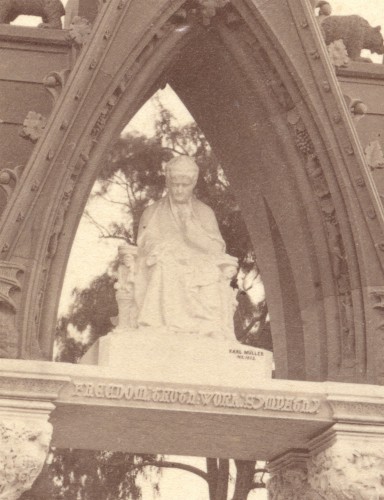
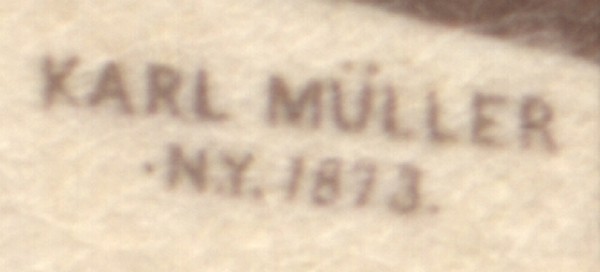
Müller’s signature is there. I remembered seeing it years ago in this photograph. But, as I have just discovered, there is a second line there that reads: “N.Y. 1873.” So now we know the year in which the Matthews Monument was created!
John Matthews is depicted in marble, lying on his back atop a sarcophagus, looking up at scenes from his life: learning how to make carbonated water, bidding his farewell to his native Liverpool, England, and coming up with new soda water products. And then there is this:
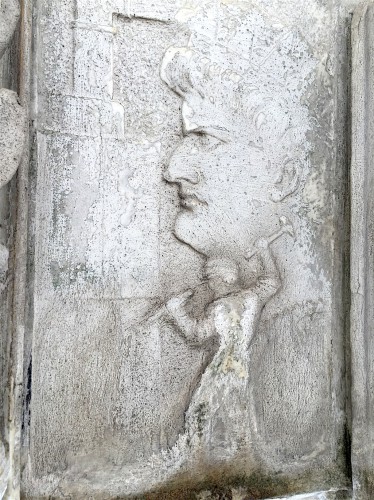
From the time of its installation, the Matthews Monument was a great attraction at Green-Wood. Here, visitors examine it:
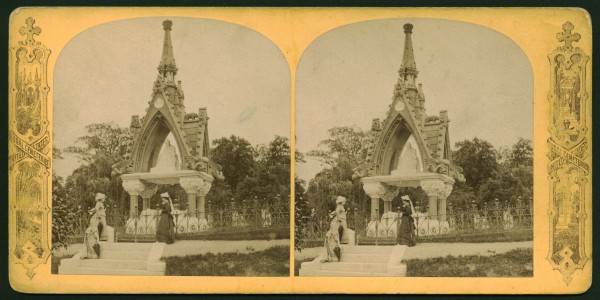
The Matthew Monument has not had an easy life. Though it was an extraordinary cemetery monument when it was unveiled circa 1873, is still spectacular today, though somewhat diminished. In 1977, the family paid for repairs to and cleaning of the monument. At that time it was discovered that the large terra cotta pinnacle had loosened; it was removed. Further, it appears, based on cemetery records, that a liquid fiberglass was applied to the monument’s marble in many places; almost 40 years later that material has created a crust over the marble, hiding its surface and obscuring its detailing.
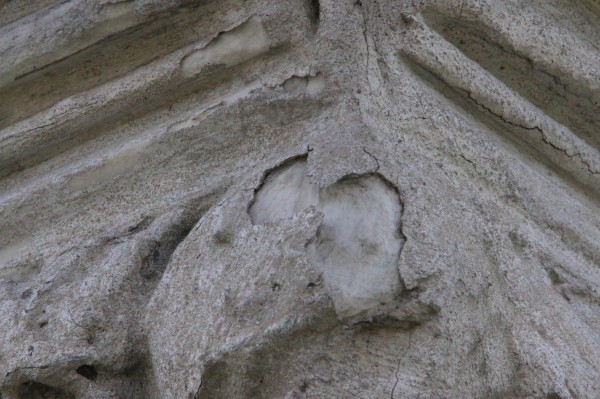
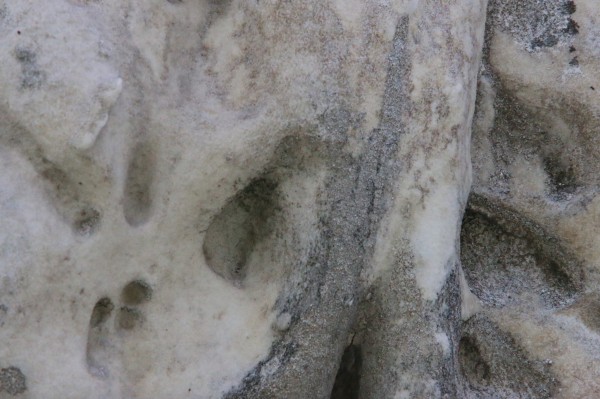
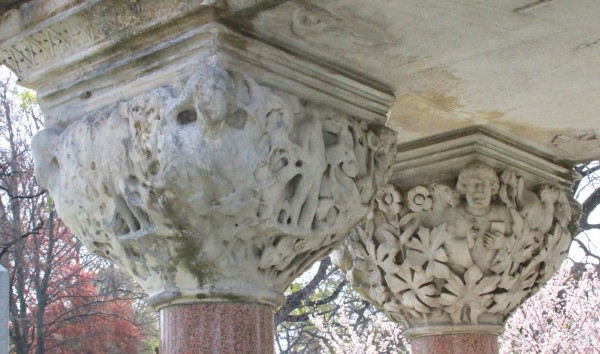
It is ironic that the chemical reaction that made John Matthews and his progeny very rich—the reaction of acid and marble that creates carbonation—is the same one which has caused the monument, exposed over the years to acid rain, to deteriorate. Adding to the woe, just a year a few years ago, the face of the female figure at the center of the monument deteriorated to such an extent that it slid off the head.
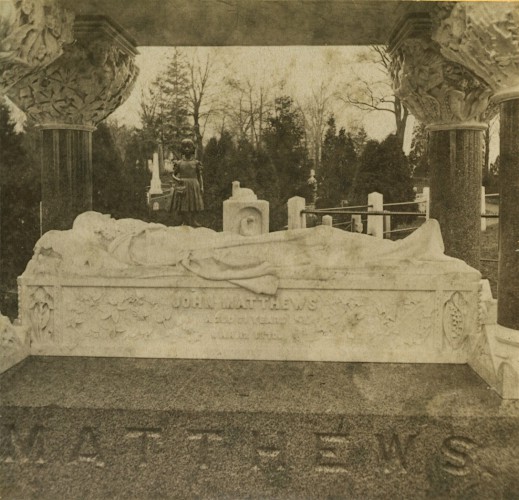
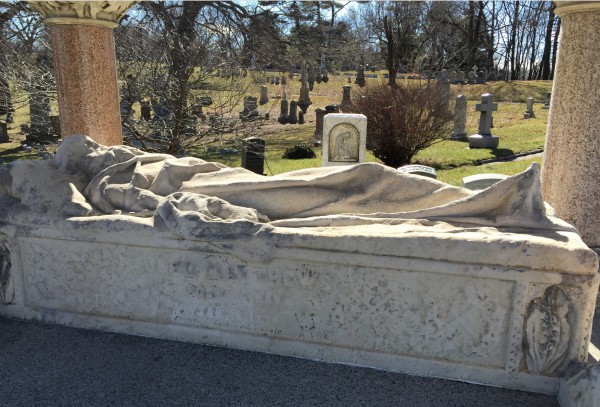
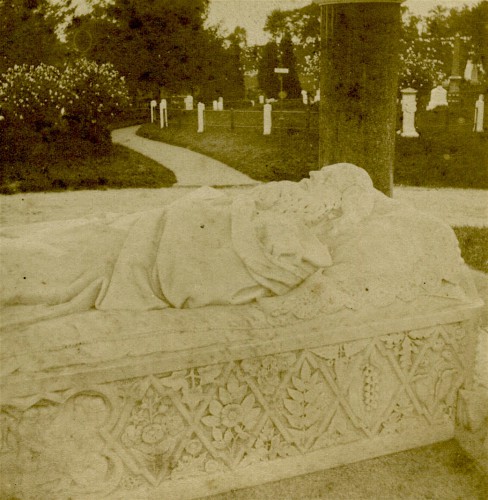
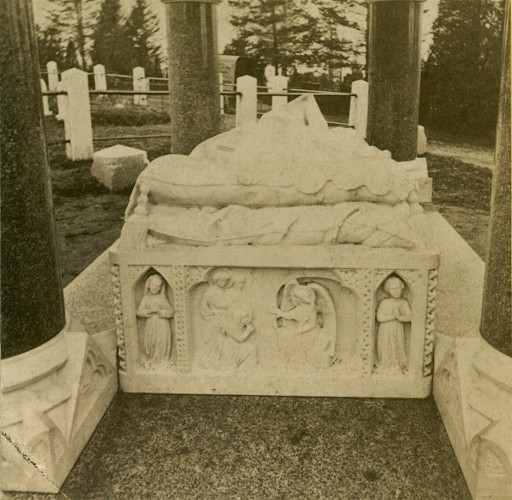
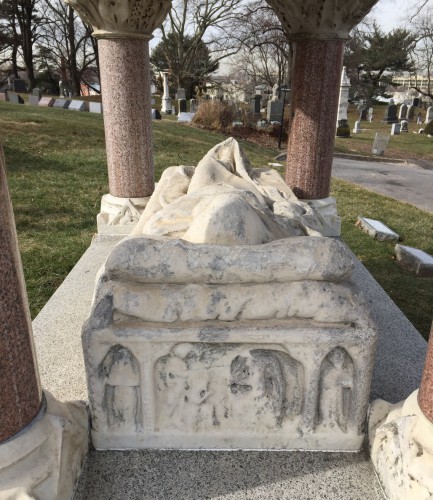
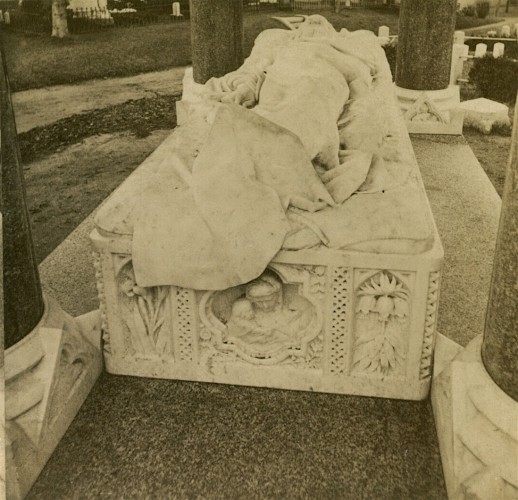
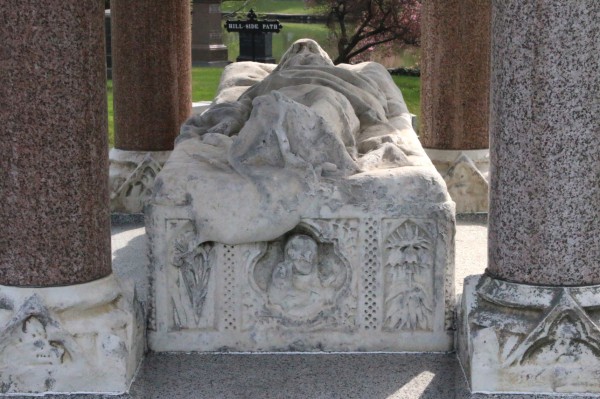
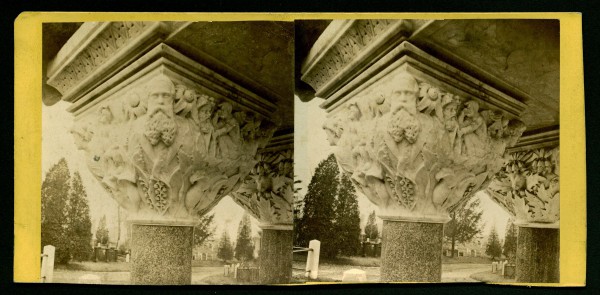
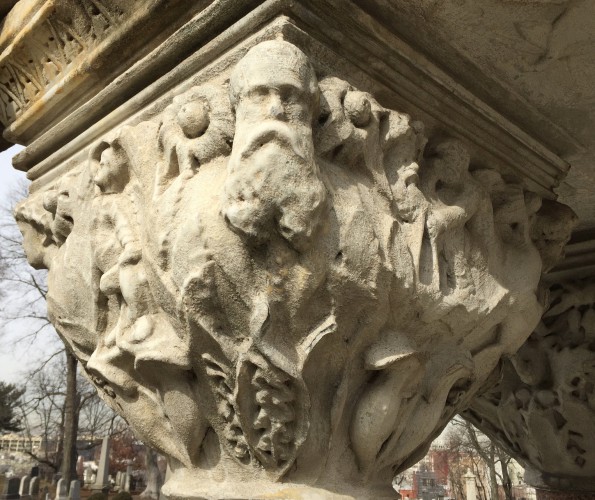
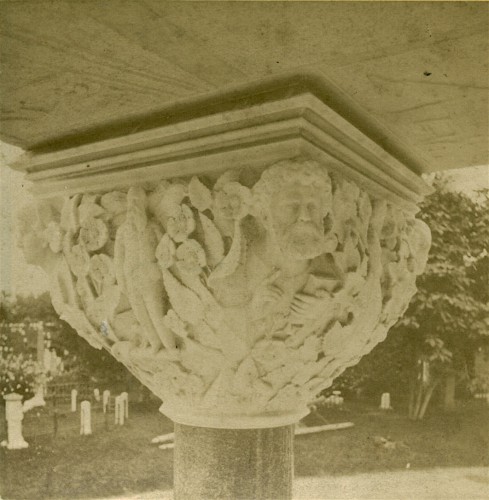
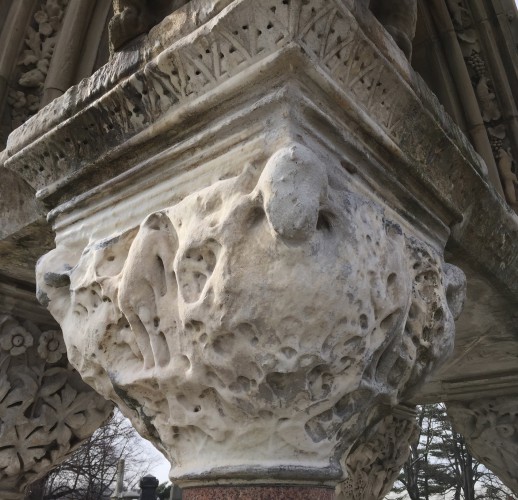
The terra cotta roof has a gargoyle at each of its four corners. When it rains, those gargoyles spray water out of their mouths. And, in winter, if conditions are right, that water may freeze, creating icicles.
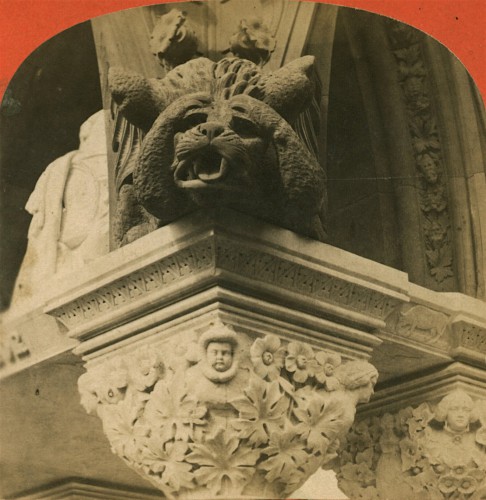
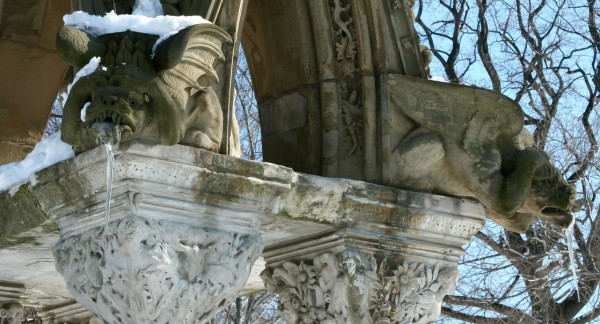
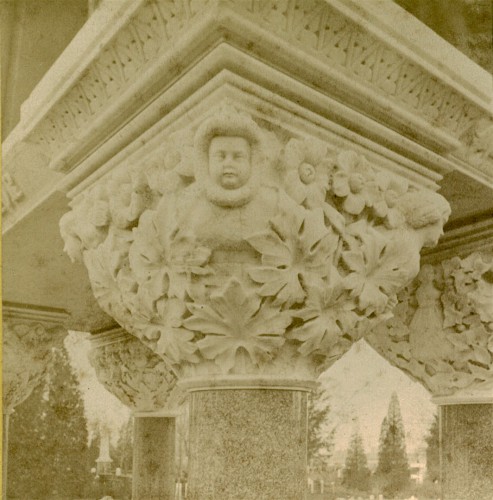
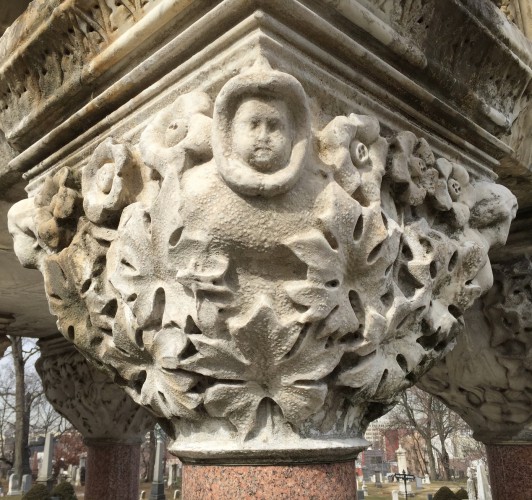
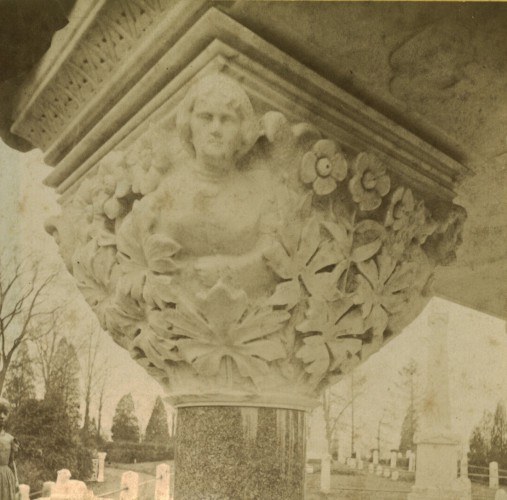
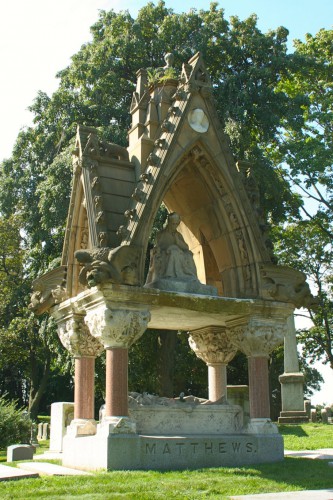
Thanks to Stacy Locke, Green-Wood’s Manager of Historical Collections, for retrieving and scanning many of these images.
Great article and photographs! My question is, Where did the bronze statue of the little girl clutching a bag in her right hand, evident in the c. 1875 half-stereoview, just beyond the Matthews effigy, go? She’s not there in the modern photograph.
Thanks!
Good spot. I don’t think anyone alive today knows where it went. That’s unfortunate.
This is wonderful. Thank you. You write: “John Matthews is depicted in marble, lying on his back atop a sarcophagus, looking up at scenes from his life: learning how to make carbonated water, bidding his farewell to his native Liverpool, England, and coming up with new soda water products”. Do any of these scenes appear in any of your photos? I am specifically looking for an image of him coming up with new soda water products, for an upcoming presentation. Thank you in advance, if you are able to assist.
There may be a fourth scene there–but I don’t have an image of it.
Jeff! You probably don’t remember me, I volunteered many years ago. But thank you for this deep dive into one of my favorite monuments of G-W!! I’ve always been inspired by the stories and the art here–and I’m actually sitting by the pond right now, visiting for the first time since moving away. Thanks for keeping all the stories and people alive (which is really what cemeteries are for). — m
Welcome back! I hope you had a great visit. And thank you for volunteering way back when.
My great uncle, Robert Schmitt ,worked for Mr. Matthews. I was told that he invented some device to make seltzer at soda fountains when he was about 30 years old. The family story was that Mr Matthews paid him for the invention and patented it. My uncle retired and lived the rest of his life on the payment. How accurate this story is I cannot tell.
Wow! That must have been quite an invention–and quite a payment! My father, during his working career, invented several things for which he got patents, but, to the best of my knowledge, may no money on those. Thanks for sharing your family’s story.